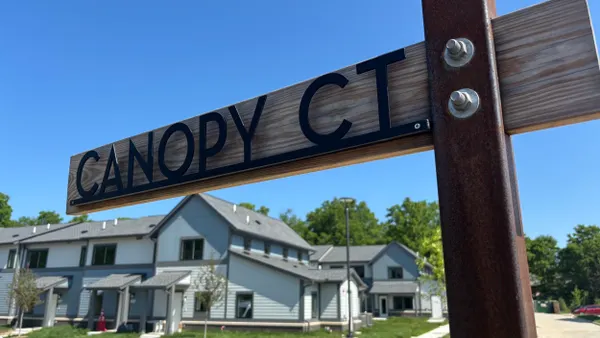Dive Brief:
- The affordable housing shortage in U.S. cities is reaching a crisis level, policymakers and industry leaders said during a panel discussion tied to the release of the Harvard Joint Center for Housing Studies’ annual state of U.S. housing report.
- Zoning reform, denser housing development and policies that lower costs for home buyers and renters are among the strategies the panelists recommended.
- To address the “crisis state,” look to successes and failures in states such as California and Massachusetts, said Clark Ivory, CEO of Utah-based homebuilder Ivory Homes.
Dive Insight:
The U.S. housing market is facing several challenges, according to the report. While price growth for homes has dropped after surging during the pandemic, interest rates remain high, pricing many people out of the market.
More multifamily homes are being built to meet the demand — with 2022’s multifamily home production reaching the highest level since the mid-1980s — but only 5% of homes built last year were considered accessible for low- or moderate-income renters, the report says. And the number of people who are homeless and unsheltered is up 35% since 2015, a surge the panelists attributed to the lack of affordable housing in U.S. cities.
Solving these challenges will require bipartisan cooperation and collaboration between states and cities, which are often at odds with each other on housing issues, Ivory said. “We can push a lot of things through at the state level, but if we don't get buy-in at the local level, then it really doesn't have the same impact,” he said.
The panelists pointed to some promising signs that states are looking to spur local housing development. In Massachusetts, for example, a 2021 law requires that towns along public-transit corridors allow high-density housing to be built near commuter rail, bus and subway stations and ferry terminals. The local planning commission in Lexington — an affluent suburb near Boston that historically favored single-family homes — went a step further, opening up more land than was required for multifamily development and becoming the first municipality to fully comply with the law.
“State laws can help change the tenor of a conversation,” said Chris Herbert, managing director of the Harvard Joint Center for Housing Studies. “Before, the planning board would have to say, ‘Here's why we think we ought to do this [and] why this is in the interest of the broader region to do this.’ Now they're saying, ‘The state's asking us to do this, and let's take it on and let's do it right.’”
To ensure residents of all income levels can afford to live in their cities, local leaders can also support down-payment assistance for first-home homebuyers as well as operating subsidies for owners of affordable housing developments to lower costs for low-income renters, said Rachel Heller, CEO of the advocacy organization Citizens' Housing and Planning Association. Zoning policies are also key to create more inclusionary affordable housing, she said.
“Zoning is the tool that our communities use to determine what can be built and what cannot be built — and that translates into who can live there and who does not have the opportunity to live there,” Heller said.
At the federal level, in late 2022 Congress appropriated $85 million for a new grant program called Yes In My Backyard, which will support states and cities as they reform their zoning regulations and plan for affordable housing.
“Zoning is such a hyperlocal piece of work,” said Adrianne Todman, deputy secretary of the U.S. Department of Housing and Urban Development. “We understand the core importance of zoning to make all these things happen, and we’re, as a federal government, going to try to incentivize that.”










